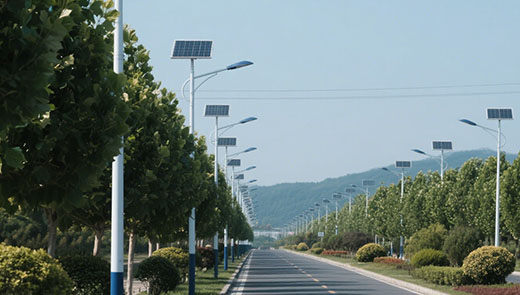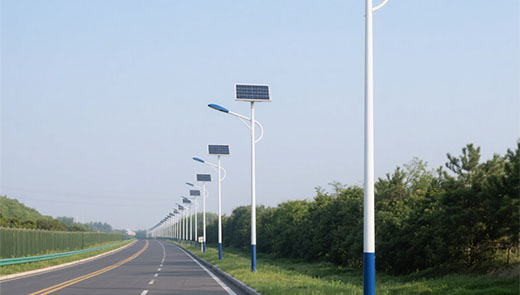traditional street lights vs solar street lights
Oct 18, 2024
With the development of science and technology and the enhancement of environmental awareness, the use of solar street lights is becoming more and more widespread. Compared with traditional street lights, solar street lights have significant differences in energy consumption, installation, and maintenance. This article will compare the differences between traditional street lights and solar street lights in many aspects.
1. Energy sources
Traditional street lights: Traditional street lights rely on power grids and usually use high-pressure sodium lamps, halogen lamps or LED lamps, which require a large amount of power support. Its energy comes from coal, natural gas or nuclear power generation. These energy sources are non-renewable and long-term use will have a negative impact on the environment.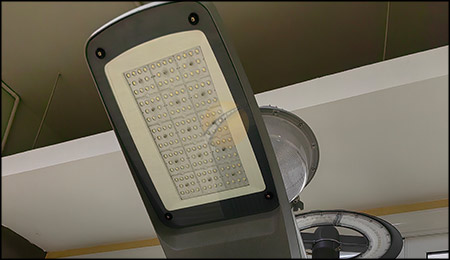 Solar street lights: Solar street lights completely rely on solar photovoltaic panels to absorb solar energy, store energy during the day, and provide electric lighting through batteries at night. This energy is clean, renewable, non-polluting to the environment, and does not require reliance on traditional power systems.
Solar street lights: Solar street lights completely rely on solar photovoltaic panels to absorb solar energy, store energy during the day, and provide electric lighting through batteries at night. This energy is clean, renewable, non-polluting to the environment, and does not require reliance on traditional power systems.
2. Installation costs and maintenance
Traditional street lights: The installation of traditional street lights requires the laying of cables. Especially when installed on large-scale road sections, complex line layout and construction are required, and the installation cost is high. In addition, problems such as cable aging and leakage will also lead to the need for regular maintenance and repairs, increasing long-term costs.
Solar street lights: The installation of solar street lights is relatively simple, does not require laying cables, and can operate independently. This significantly reduces installation costs, especially in remote areas or places without easy access to the grid. Since the system design of solar street lights is simpler, the maintenance cost is also lower, and only the photovoltaic panels need to be cleaned regularly and the batteries replaced.
3. Operating costs
Traditional street lights: Traditional street lights rely on electricity supply for a long time, and the cost of electricity increases with changes in usage time and electricity prices. In addition, due to the use of high-voltage power equipment, there may be certain power losses and safety hazards.
Solar street lights: Solar led street lights use free solar energy and have almost no running costs. Although the initial equipment purchase cost is high, in the subsequent use process, since there is no electricity bill, the operating cost is almost zero, making it more economical in the long run.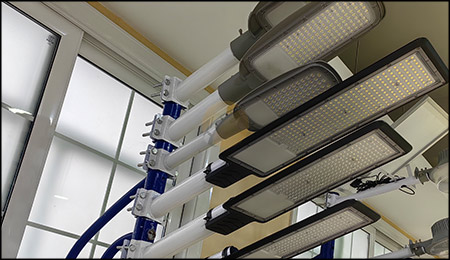 4. Environmental benefits
4. Environmental benefits
Traditional street lights: Since the electricity used comes from non-renewable energy, the use of traditional street lights will indirectly produce greenhouse gases such as carbon dioxide, increasing the risk of air pollution and global warming.
Solar street lights: Solar street lights use solar energy, a green energy, and produce almost no pollution. Not only does it reduce dependence on fossil fuels, it also reduces the carbon footprint and is environmentally friendly.
5. Lighting effect and stability
Traditional street lights: Traditional street lights have mature technology and can usually provide more stable and continuous lighting effects. Even during long periods of no light or extreme weather conditions, traditional street lights can ensure lighting stability because they rely on power from the grid.
Solar street lights: The lighting effect of solar outdoor lights depends largely on weather and lighting conditions. If it is continuously cloudy or the photovoltaic panels are blocked, it may lead to insufficient battery energy storage, thus affecting the lighting effect. However, with the continuous improvement of energy storage technology, the lighting duration and brightness of solar street lights are also gradually improving.
6. Application scenarios
Traditional street lights: Traditional street lights are suitable for use in large cities, main roads, squares and other places with convenient power supply and busy traffic. They can meet the needs of large-area, high-brightness lighting.
Solar road lights: Due to their independent power supply, solar street lights are particularly suitable for remote areas, rural areas, scenic spots and other places without grid coverage or where the grid is unstable. In addition, solar street lights are also widely used in new residential areas, parks, seashores, ecological zones and other places that pay attention to environmental protection.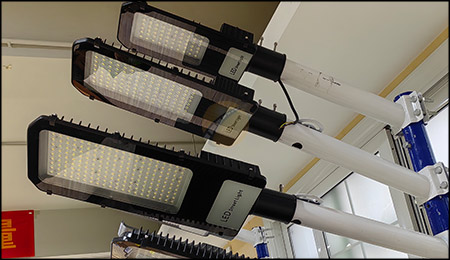
In general, there are significant differences between traditional street lights and solar street lights in terms of energy utilization, installation and maintenance, operating costs, and environmental benefits. With the advancement of technology and the pursuit of sustainable development, solar street lights have shown more significant advantages in many scenarios. However, traditional street lights still occupy an important position in certain places that require high brightness and stable lighting.
1. Energy sources
Traditional street lights: Traditional street lights rely on power grids and usually use high-pressure sodium lamps, halogen lamps or LED lamps, which require a large amount of power support. Its energy comes from coal, natural gas or nuclear power generation. These energy sources are non-renewable and long-term use will have a negative impact on the environment.

2. Installation costs and maintenance
Traditional street lights: The installation of traditional street lights requires the laying of cables. Especially when installed on large-scale road sections, complex line layout and construction are required, and the installation cost is high. In addition, problems such as cable aging and leakage will also lead to the need for regular maintenance and repairs, increasing long-term costs.
Solar street lights: The installation of solar street lights is relatively simple, does not require laying cables, and can operate independently. This significantly reduces installation costs, especially in remote areas or places without easy access to the grid. Since the system design of solar street lights is simpler, the maintenance cost is also lower, and only the photovoltaic panels need to be cleaned regularly and the batteries replaced.
3. Operating costs
Traditional street lights: Traditional street lights rely on electricity supply for a long time, and the cost of electricity increases with changes in usage time and electricity prices. In addition, due to the use of high-voltage power equipment, there may be certain power losses and safety hazards.
Solar street lights: Solar led street lights use free solar energy and have almost no running costs. Although the initial equipment purchase cost is high, in the subsequent use process, since there is no electricity bill, the operating cost is almost zero, making it more economical in the long run.

Traditional street lights: Since the electricity used comes from non-renewable energy, the use of traditional street lights will indirectly produce greenhouse gases such as carbon dioxide, increasing the risk of air pollution and global warming.
Solar street lights: Solar street lights use solar energy, a green energy, and produce almost no pollution. Not only does it reduce dependence on fossil fuels, it also reduces the carbon footprint and is environmentally friendly.
5. Lighting effect and stability
Traditional street lights: Traditional street lights have mature technology and can usually provide more stable and continuous lighting effects. Even during long periods of no light or extreme weather conditions, traditional street lights can ensure lighting stability because they rely on power from the grid.
Solar street lights: The lighting effect of solar outdoor lights depends largely on weather and lighting conditions. If it is continuously cloudy or the photovoltaic panels are blocked, it may lead to insufficient battery energy storage, thus affecting the lighting effect. However, with the continuous improvement of energy storage technology, the lighting duration and brightness of solar street lights are also gradually improving.
6. Application scenarios
Traditional street lights: Traditional street lights are suitable for use in large cities, main roads, squares and other places with convenient power supply and busy traffic. They can meet the needs of large-area, high-brightness lighting.
Solar road lights: Due to their independent power supply, solar street lights are particularly suitable for remote areas, rural areas, scenic spots and other places without grid coverage or where the grid is unstable. In addition, solar street lights are also widely used in new residential areas, parks, seashores, ecological zones and other places that pay attention to environmental protection.

In general, there are significant differences between traditional street lights and solar street lights in terms of energy utilization, installation and maintenance, operating costs, and environmental benefits. With the advancement of technology and the pursuit of sustainable development, solar street lights have shown more significant advantages in many scenarios. However, traditional street lights still occupy an important position in certain places that require high brightness and stable lighting.

